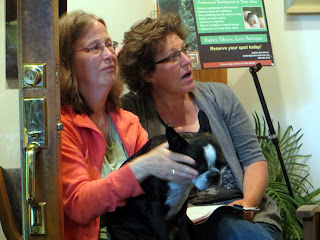 |
| Julie, paying attention. Photo by Sharon Hull. |
Most people want friends who are loyal, honest, and kind. I do too. I also put a high premium on friends who suddenly blurt out “ooh! Are you a Clouded Sulphur? Are you ovipositing? Are you ovipositing on a honeysuckle, or are you just cold?”
This is the sort of conversational Tourette’s you can be privy to when you’re walking down a country lane with Julie Zickefoose. The Clouded Sulphur in question would be a small butterfly fully twenty feet away from us that I couldn’t have seen with a telescope and GPS coordinates. It goes without saying that I couldn’t have told you if it was in the business of planting eggs on a honeysuckle.
The most fun people in the world are the ones that haven’t quit paying attention to things. Most of us, if we’re lucky, were pretty good at that when we were kids. For one thing, we were a lot closer to the ground, and that helps. But we also hadn’t gotten our brains all webbed over by concern over how others see us, or cluttered up with tchotchkes like the Kardashians, whoever they are.
I wasn’t a pure child, nature-wise. I flat-out didn’t like mosquitoes and gnats until Daddy explained that they were frog food, which made them nobler. And although I was never cruel in any other way, I liked to spit on ants. Or more precisely, around ants. We had a brick patio that was constantly being mined for sand by ants and I’d sit out on it and watch them work. Out of boredom I’d try to moat one of them with a ring of spit just to see if it could get out. The ant was never in any danger. Nobody in the Washington, D.C. area had any spit in the summertime. All of our water went into the production of sweat, which trickled continuously into our shoes rather than evaporating as it might have in a more sensible climate. We had to dab our postage stamps on our foreheads first to get them to stick to an envelope.
But I probably spent hours watching ants. I didn’t necessarily draw any correct conclusions. I thought ants lived in little pyramids that they erected themselves. Every time we’d hose the patio off, they’d get busy and build themselves more pyramids. I was a fully grown person before it occurred to me that the pyramids were just the debris pile from excavating their real homes. But right or wrong, I was enriched by watching ants. It calibrated my mind to the proper speed of life. The older we get, the more time we spend in the future and the past, and neither one is good for us. We’re better off getting our pace to match the rest of the world’s. You don’t necessarily need a spiritual advisor, but you should never pass up a conversation with a good naturalist like Julie. That’s how you can find out about spittlebugs, and nothing gets you over yourself faster than that.
Most of us have seen those little globs of what we will call spit hanging in the crotches of our garden plants. The spittlebug produces these, but not (precisely) by spitting. The spittlebug is the larval form of a bouncy little item called the froghopper, and it chews on its host plant for sap. From there, according to Wikipedia, the “filtered liquid” is transformed into a glob of comfy bubbles. Let’s review. What is the liquid being filtered through? The spittlebug. That means the bug is blowing it out its tiny little ass. Our future froghopper is comfortably ensconced in a protective nest of wet farts. We can’t do that on our best day.
We can only try.
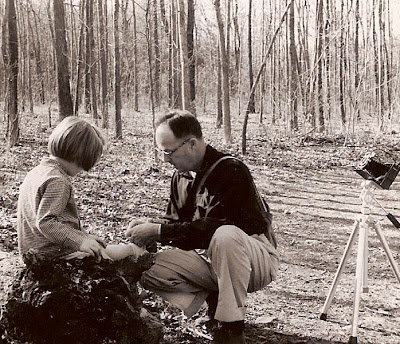
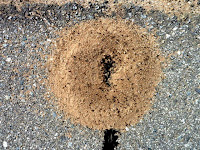
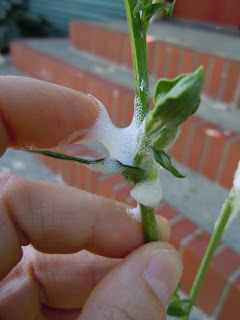
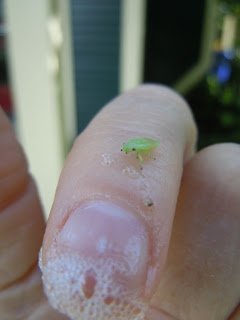
I will carry the phrase " comfortably ensconced in a nest of wet farts" with me all day, Murr. Much obliged!
Carry it lightly and in good cheer.
I have never seen hell better described than 'We had to dab our postage stamps on our foreheads first to get them to stick to an envelope' The wet farts just added to the picture. Thank you. I think.
In fact, it is because the main offices of the US Postal Service are in Washington, D.C. that peel-off stamps were invented in the first place.
I've never seen hell better demonstrated than by the District of Columbia and environs in the Summer. It's no wonder they built the capitol there; they were trying to get rid of the politicians. Then they wiped out yellow fever and some guy invented air conditioning, and we were screwed.
Worse, a whole hell of a lot of them think air conditioning is going to be the answer to that little problem they say we don't have.
I am several 100s(1000s?) of miles north of my friend, Elephant's Child…so multiply her comment by a factor of ..oh, hell! whatever.
You're right about the non-observant being dull company.
You're thousands of miles away? I always picture you Aussies more or less within sight of each other, bobbing on a sea of bunnies.
Yes, it's about a 3 days drive (longer if you allow for pit stops) and this morning,here in the tropics, was 6deg C (mid 30s F)Any spittle here would be frozen solid!
Oh thank you, thank you, thank you. After a week of road tripping and not enough examination of flowers' naughty bits, I SO needed this post.
I wrote it just for you.
What information. Love it and most of it was new to me, although I had seen this spittle for many years. We miss so much when we concentrate on the artificial stuff.
I think the little bugs are really cute, too. Apparently they fart up more than one glob and then just hang out in one of them. That decreases the chances a predator will slurp them up on the first try.
Interesting post…but…eeeewwww! I'll never look at that foamy stuff the same again. I figured it had something to do with bugs but didn't know it was that. lol
I guess it all depends on your own life experiences. Me, I like the spittle even more. But I'm a huge fan of flatulence.
I was so much happier when I thought it was really spit… but the "wet fart" reference made me blow tea out my nose, so thanks for that. You made my day!
Diane Henders, ensconced in a nest of wet snot bubbles.
Snork!
Okay, y'all, where do you think HONEY comes from? "Honey bees transform nectar into honey by a process of regurgitation, and store it as a primary food source in wax honeycombs inside the beehive." – Wikipedia
Honestly, I thought they got it from a roadside stand like everybody else.
If an apiarist has a weak hive, it in fact WILL become a roadside stand for stronger hives of honeybees, and the former apiarist will complain to the latter apiarist as if there was a spittlebug's chance in hell that the latter apiarist telling her bees to not go to meddling in her neighbor's hive would be an effective deterrent.
Although I would point out that a spittlebug has probably a better chance in hell than a lot of us.
And some of us are so much better than others in the production of the comfortable " protective nest of wet farts", the champions being politicians and salespeople. And, now I will have that very picturesque phrase in mind every time I am with a politician and/or salesperson.
Thanks for that!
I think you might be disparaging the good name of farts.
I had a problem getting the kids to eat eggs when they found out where they (the eggs, not the kids)came from… can you imagine the same kids gathering veggies from the garden with "spittle" hanging in the crevices? Maybe you hit on a way to get the USA to lose weight?
Have you told the kids where they came from? That'll get 'em to take showers.
This makes me want to try to create such a bubbly ensconcement, not to be outdone by a tiny bug. But first, it would mean eating only plant leaves and stems and juices, and this carnivore is just not likely to pull that off. Maybe I can try it before my upcoming colonoscopy. I'll let you know how it goes.
With your colonoscopies, first you have your outgoing, THEN you have your upcoming.
I will never think of wet farts the same way again. Though I'm not sure I've ever really given wet farts much of a thought. Very funny, Murr.
Yeah, I was just going to ask how you thought about them before. There are really only so many variations on them.
Another great post. Thank god our young sons can't actually pump out wet farts. Imagine those contests.
Maybe you ain't feedin' 'em right.
Oh my, Murr, you've outdone yourself this time. Loved every word but especially (having lived in DC & grown up in even more hot & humid Arkansas) "Nobody in the Washington, D.C. area had any spit in the summertime. All of our water went into the production of sweat, which trickled continuously into our shoes rather than evaporating as it might have in a more sensible climate." And I'm still giggling helplessly as I imagine wet farts as a bubble nest. But agree totally that "The most fun people in the world are the ones that haven't quit paying attention to things. " And you, like Julie, are one of them, though you do see the world as no one else does. Thank you for regularly sharing your unique take on things with the rest of us.
In the photo, Chet Baker is NOT paying attention. You have him nearly comatose with pleasure.
I may have a little different perspective than most, but if the rest of y'all just bent down a little, you'd see it the same. And yes–let's go with "comatose" with pleasure. It's less untoward.
I think we should all just get real and call them fart bugs. It's only natural…and I think spittle is grosser anyway. Like in baseballl, when the players spit right when the camera is on a closeup…GROSS. Farts wouldn't be as bad, though. We wouldn't even see them, really. maybe just a slight grimace before the windup. I 'd watch more baseball, that's for sure.
What do you think the leg kick is about?
Are you ovipositive about this?
Lord knows I'm sticking to something.
The best thing about working with very small children is that I get to keep my sense of wonder at the things we find in nature! Their excitement over a roly-poly or a butterfly is infectious!
You are absolutely right. That is the very best thing about being around children. That, and the wet farts. Does anyone else think the roly-poly (we used to call them sowbugs where I come from) might be a trilobite?
Wet farts aren't a good by-product in humans. I remember how surprised I was when I first investigated one of those spittle patches and found an occupant in there. I should have figured that *something* wouldn't leave spit on a plant for no good reason. I didn't know what the reason actually was, however, until I read this post. Thanks, Murr! Another rung of enlightenment achieved today.
You, my dear Tiffin, are taking the easy route to enlightenment.
You mean I can stop all that meditating?
Liquid farts…well, hate to admit I have had a few of those but probably not to the extent of that little bug! Now I have a picture in my mind of a man walking down the street with lots of bubbles dripping down his leg….not a pretty sight!
You are a woman of vision.
A sharp-eyed friend can glance around my gnarled garden, and immediately point out the rabbit (resting) forms. Such attentive souls are ideal walking (and general) companions, indeed.
Thanks for bringing the ovipower!
Shoot, I have a 20-foot salamander in mine and hardly anyone notices. Good for you.
I like the picture of your dad (I assume) tying your shoelace in prepartion for taking your picture. What an endearing photo!
As for the spittlebugs, they're vegetarian so their bubbly production doesn't skeeve me at all.
preparation, not prepartion
That's my dad and me. I like it too. A lot of these photographs are about an inch square and it wasn't until I scanned them that I could even tell what was going on, but they're sharp as anything.
I am still processing this post, but unfortunately or fortunately, I had a martini before reading this. I'd love some spiritual advice from Julie, but Spittlebugs and wet farts seem too difficult to ponder right now. Think I'll just mix another glass of liquid philosophy.
The wet farts actually get easier to understand with enough martinis.
Influenced by the photo of you and Julie, I thought the butterfly bit was describing a nerdy naturalist type of charades… "You're a tree–you're a Pseudotsuga menziesii–no, wait, you're a Thuja plicata!"
Sounds like fun, eh?!
Oh, it DOES sound like that. No, that was a monolog. I just listened and marveled.
Several douches with the garden hose should remedy the situation, but I must admit they are persistent little boogers.
Who's the douche with the garden hose? Oh I see what you mean. Yeah, I just leave them. I think they're adorable. They don't seem to do much harm. Mine love the campanulas, and somebody needs to.
This comment has been removed by the author.
I'm suddenly feeling like I need to go sit in the bathtub and compete with the spittlebugs. What inspiration! Pics at 11.
We're going to need sound, too.
Always been fascinated by critters myself. Saw a magnificent metallic red fly the other day that I had never before noticed. It was about 1/4 of an inch long. Stunningly beautiful in the sunlight.
Word. There are a lot of flies out there that seem to be made of parts of those aluminum beverage tumblers from our youth.
LOL
jaket kulit
ra leather
enjoy leather
raffi leather
garvis leather
kampoeng kulit
jaket kulit
bomber leather
LOL
jaket kulit
ra leather
enjoy leather
raffi leather
garvis leather
kampoeng kulit
jaket kulit
bomber leather
LOL
jaket kulit
ra leather
enjoy leather
raffi leather
garvis leather
kampoeng kulit
jaket kulit
bomber leather